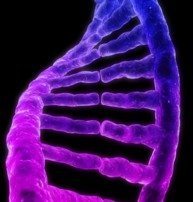Uncovering the Genetic Roots of Mesothelioma
 A team led by one of the world’s top mesothelioma researchers may have uncovered a way to diagnose mesothelioma and certain other cancers earlier by identifying people at high genetic risk.
A team led by one of the world’s top mesothelioma researchers may have uncovered a way to diagnose mesothelioma and certain other cancers earlier by identifying people at high genetic risk.
Dr. Michele Carbone, a University of Hawaii cancer researcher known for his studies of mesothelioma genetics in Turkish families, says many American mesothelioma patients can trace their disease to a common ancestor from the 1700s.
Using a combination of genetic and genealogic research data, Carbone and his colleagues have come up with a method to identify and monitor high-risk people with the goal of improving mesothelioma outcomes.
Genes and Mesothelioma Risk
Mesothelioma is an extremely rare and deadly cancer that is almost always caused by exposure to asbestos.
However, scientists still do not fully understand why most people who are exposed to asbestos never get the disease.
What is known is that the answers are probably in their genes. Studies among Turkish families that have many cases of mesothelioma, melanoma, and other cancers, have shown that a particular genetic mutation can dramatically raise mesothelioma risk.
Nine Generations of Mesothelioma Sufferers
In their new study of mesothelioma risk, Dr. Carbone and colleagues from around the world, found a core of 106 people from four US families whose descendants – numbering around 80,000 – are all at higher risk for a mesothelioma diagnosis.
That is because they are more likely to have an inherited cancer syndrome characterized by a mutation in the BRCA1-Associated Protein 1 (BAP1) germline.
Amazingly, this cancer syndrome, which raises the risk for mesothelioma and other cancers, has been traced back to a couple born in Germany in the 1700s.
Earlier Detection May Improve Mesothelioma Outcomes
Knowing where the gene mutation behind many mesothelioma cases came from allowed the team to identify new branches of the family that may be carrying BAP1 mutations.
“We have also implemented early-detection strategies that help identify cancers at early stage, when they can be cured (melanomas) or are more susceptible to therapy (malignant mesothelioma and other malignancies),” states the report.
While there is still no cure for mesothelioma, mesothelioma treatments, such as chemotherapy and surgery, are most effective when they are used in the earliest stages of the disease.
Source:
Carbone, M et al, “Combined Genetic and Geologic Studies Uncover a Large BAP1 Cancer Syndrome Kindred Tracing Back Nine Generations to a Common Ancestor from the 1700s”, December 18, 2015, PLoS Genetics





